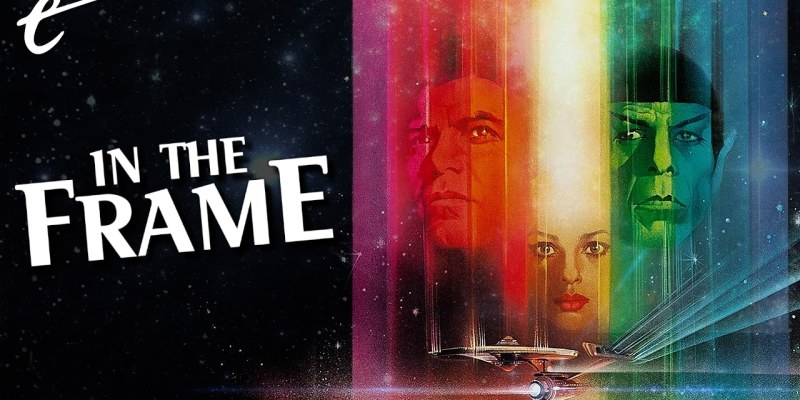This week saw the release of the remastered Director’s Edition of Star Trek: The Motion Picture on Paramount+, offering a glorious 4K restoration of a version of the film that had only previously been available on DVD.
The Motion Picture has a somewhat complicated legacy. The film was a massive commercial success, placing fourth at the domestic box office in 1979, ahead of films like Apocalypse Now or Alien. It picked up three nominations at the following year’s Academy Awards. It essentially revived the Star Trek franchise, bringing it back to live action for the first time in a decade and launching a six-film franchise. However, the film was not an unqualified success.
In the pages of Starlog, Harlan Ellison described it as “a dull film: an often boring film, a stultifyingly predictable film, a tragically average film.” In The Los Angeles Times, Charles Champlin conceded that the film was “sluggish going.” In The New York Times, while awed by the film’s scale, Vincent Canby reflected that the cast was largely “limited to the exchanging of meaningful glances or staring intently at television monitors, usually in disbelief.” Critics labeled it “The Motionless Picture.”
These criticisms are certainly fair. The plot of Star Trek: The Motion Picture is largely derivative. It owes a lot to 2001: A Space Odyssey, which feels oddly appropriate given that 2001 was released in the gap between the second and third seasons of the original Star Trek and had perhaps made the show look obsolete. It also recalls the plot of “The Changeling,” a middling episode from the second season of Star Trek. However, The Motion Picture is also proof that plot is not everything.

The Motion Picture is definitely relaxed in its pacing. This makes a certain amount of sense, given that the film was adapted from the proposed pilot of the aborted Star Trek: Phase II television show. That pilot, “In Thy Image,” was originally intended to run 90 minutes on television, so stretching that out to two hours in the theatrical cut (and two hours and a quarter in the Director’s Edition) takes its toll on the material.
However, this is also part of the appeal of The Motion Picture. “My inclination, as I slid down in my seat and the stereo sound surrounded me, was to relax and let the movie give me a good time,” admitted Roger Ebert in his initial review of the film. “I did and it did.” There is a sense in which The Motion Picture works better as an immersive experience than as a feature film. It is a window into the imaginary world of Star Trek, inviting the audience to step through and lose themselves.
This explains some of the more gratuitous choices within Star Trek: The Motion Picture, such as the decision to open the film with a literal overture. The Motion Picture and The Black Hole were the last two major films to open with an overture until Lars von Trier’s Dancer in the Dark in 2000. One of the movie’s most famous sequences, one affectionately mocked on Lower Decks, is a five-minute flyby reintroducing the remodeled USS Enterprise.
It’s worth pausing to put this in its cultural context. Paramount president Michael Eisner had been inspired by the success of Star Wars and Close Encounters of the Third Kind to transition Star Trek to the big screen. Gene Roddenberry claimed that the returns on Star Wars “pushed” the studio to greenlight the movie. Almost every review of The Motion Picture made some allusion to George Lucas’ science-fantasy epic, with many complaining that it missed what “made Star Wars such fun.”

However, while The Motion Picture was undoubtedly a much slower and more deliberate movie than the original Star Wars, it shared several key attributes with that era-defining blockbuster. To put it simply, The Motion Picture marked the first time that the Star Trek universe felt like a real space governed by its own logic and following its own rules. Despite, or perhaps because of, the film’s somewhat broad plot, The Motion Picture often feels like a travelogue of an imaginary realm.
To be fair, there was some continuity within the original Star Trek series. The Klingons and the Romulans were recurring antagonists, and the disappearance of a starship model behind the scenes necessitated the addition of some universe-building dialogue about a potential alliance in “The Enterprise Incident.” The crew had visited Spock’s home world in “Amok Time,” even if what little they saw of it was a cheap set on a studio backlot.
However, the original Star Trek series was a network television show in the late 1960s. Plot was always going to be paramount. What little worldbuilding happened in episodes like “Journey to Babel” or “Lights of Zetar” was often incidental or opportunistic. The show would often bend its internal logic to fit the demands of the story being told, such as seemingly conflicting references to “the Eugenics Wars” or “World War III” waiting in mankind’s future.
In contrast, freed of the restraints of broadcast television, The Motion Picture can luxuriate in the finer trappings of the Star Trek universe. In “The Trouble with Tribbles,” Korax (Michael Pataki) boasts that half the quadrant is “learning to speak Klingonese,” but The Motion Picture opens with an extended sequence set mostly on a Klingon ship with dialogue subtitled. The Klingons don’t speak English, presumably because there is no intended human audience.

This sequence is followed shortly by a trip to Vulcan. The planet looks very different than it did on the television show. Director Robert Wise uses widescreen composition and special effects to offer an impressive sense of scale and spectacle. It feels like a truly alien world. The audience joins Spock (Leonard Nimoy) during the Kolinahr ritual, to purge his emotions. Once again, because there are no human characters present, the characters speak entirely in the fictional language of Vulcan.
There are plenty of other smaller choices like this, which are designed to reinforce the sense that the Star Trek universe exists beyond the contrivances of the plot of The Motion Picture. The movie devotes a lot of runtime to the Enterprise’s departure from space dock, and then it promptly establishes that warp drive should not be employed within a solar system, a rule that has been applied with varying consistency across the franchise’s history, but a rule established nonetheless.
There’s a certain extravagance to Star Trek: The Motion Picture. Does the movie need all of its sets, such as an incredibly elaborate engineering bay? When the ship’s Deltan navigator Ilia (Persis Khambatta) is converted into a probe for the mysterious entity V’ger, her old lover Decker (Stephen Collins) takes her to the recreational deck and offers her a guided tour of the various leisure activities and gaming options available. For all the movie’s stakes, it feels almost like a futuristic version of Cribs.
In transitioning from television to film, The Motion Picture is able to establish a new baseline for the quality of spectacle on display. When Star Trek was on television, the simple shots-exchanged battle sequence in “Elaan of Troyius” could take months to realize, costing lots of money and pushing the episode far down the release calendar. While the film’s special effects budget spiraled out of control, the film’s universe still looks vivid and rich. It is truly immersive.
In many ways, The Motion Picture established a firm identity for the Star Trek brand going forward. The production design on Star Trek: The Next Generation would more closely resemble that of The Motion Picture than of the original Star Trek, much the same way that the production design of Star Trek: Discovery and Star Trek: Picard would owe more to the J.J. Abrams reboot franchise than to the design of shows like Star Trek: Deep Space Nine or Star Trek: Voyager.
Several elements of Star Trek: The Motion Picture ported over directly to The Next Generation, such as Jerry Goldsmith’s theme music. Ilia and Decker provide the templates for Deanna Troi (Marina Sirtis) and William T. Riker (Jonathan Frakes). Like Ilia, Troi is initially presented as a sensuous empath. Like Decker, Riker is introduced as a careerist young officer who sees his executive officer position as a temporary speed bump. Like Ilia and Decker, Troi and Riker were once lovers.
At points, The Motion Picture feels more like a manifesto than a movie. This is particularly true of Gene Roddenberry’s literary adaptation, which at times reads like a religious text reflecting the preoccupations of its creator. The novel’s third sentence reveals that James T. Kirk (William Shatner) was named after his mother’s “first love instructor,” and there are asides on the Vulcan “sense of oneness with the All” and the emerging “group consciousness” of so-called “new humans.”
From the very beginning, Star Trek had promised its audience the opportunity to explore “strange new worlds.” However, it was only with The Motion Picture that those worlds felt truly tangible.
